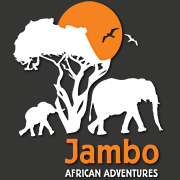Background Information
The magnificent Queen Elizabeth National Park, located in the western corridor of the Great African Rift Valley, is blessed with a variety of habitats – tropical forest, green meadows, savannah, crater lakes and swamps. Within the park is Lake George, the Kasinga Channel, a waterway rich in wildlife and birds, and half of Lake Edward, home to the largest concentration of hippo in the world, in excess of 35,000 animals. The Ruwenzori Mountains (Mountains of the Moon) act as a backdrop to this park, being the highest mountain range in Africa with the third highest peak at 5,109 meters above sea level. This is one of Africa’s most beautiful and biologically diverse reserves. Lion, leopard, elephant, hippo, Uganda kob, and the giant forest hog are among the big game and birdlife is exceptionally rich.
Q.E.N.P. boasts a one day record for birding to be 296 species, with a total recorded population of 565 species….one of the highest in the world. Bird sightings include the shoebill stork, the black bee-eater, kingfishers, raptors and spectacular flocks of flamingos. The launch trip along the Kazinga Channel is particularly rewarding for viewing a variety of game, especially hippo, buffalo, elephant and a vast array of birds. You may also see the famous tuskless elephants that have evolved in response to poaching in the past. Around Ishasha go on the hunt for the famous tree-climbing lions, which lounge nonchalantly in the upper branches of old fig trees. In the Maramagambo forest, a vast virtually untouched woodland area, search for forest game and primates.
Climate
The climate in Queen Elizabeth NP is warm. Temperatures remain stable year-round, being near the equator. Daytime temperatures rise to around 28°C/82°F and slowly fall to around 16°C/61°F at night. Queen Elizabeth NP doesn't have a real Dry season, so there is always potential for rain. Rain happens less during December through January, with June and July having the least rain. Wet seasons occur in March to May and from August to December.
Located about 410km/255mi north of Kampala. The direct drive takes about six hours, but your itinerary will most likely include some parks on the way. It is also possible to fly to any of the nearby airstrips of Kasese, Mweya or Ishasha by scheduled or chartered aircraft from Entebbe International Airport or Kajjansi Airfield near Kampala.
You will enter Uganda at Entebbe International Airport (EBB), about 46km/29mi from Kampala, the capital city. Generally, your tour operator will arrange for your pick-up from the airport, and organize any further transportation required as part of your safari package.
Leopard sightings are common, and the Isasha sector is famous for its tree-climbing lion. Huge herds of buffalo and elephant are found in the savannah areas of the park. An amazing number of hippo inhabit the Kazinga channel on which daily boat trips are conducted. Chimps can be tracked, and several antelope and other primate species are present. Giraffe and zebra are absent.
The park is set against a backdrop of the Ruwenzori Mountains. Additional scenic points are Kazinga Channel between Lake Edward and Lake George and at least 10 crater lakes. The most accessible part of the park is open savannah, but large forest areas are open to the public. These include the forested Kyambura Gorge and the extensive Maramagambo forest in the southeast.
Best Time to Visit
January to February and June to July (Dry seasons)
High Season: June to September (This is premium gorilla tracking time in Uganda, and there are many visitors around)
Low Season: April, May, October and November (There are fewer people in the park) Best Weather: June to July and January to February (Less rainfall) Worst Weather: April, May and September to October (High rainfall, some roads become impassable)








